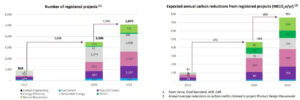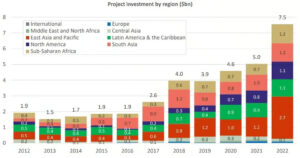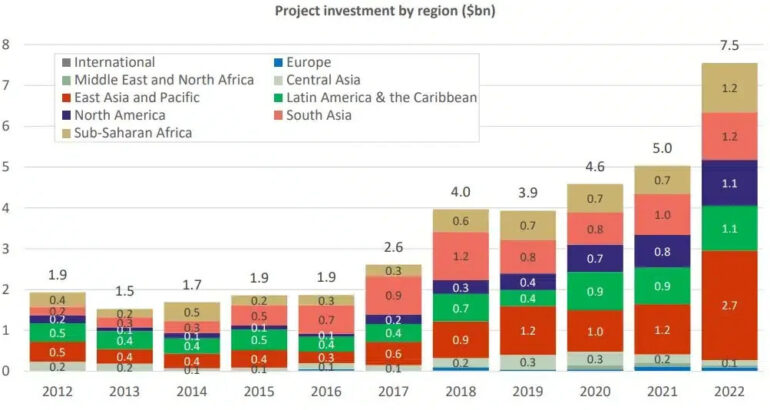- by numerix
Closing the funding deficit of $90 billion
By region, since 2020 North America maintained the top spot as the largest destination for carbon credit investment, accounting for up to 16%. In comparison, only 1% of global carbon credits funding went to Europe.
In the distribution of investments, the East Asia and Pacific region secured the largest share, accounting for one-third or $2.7 billion in 2022. Notably, the Sub-Saharan African region is also making significant strides, with its global investment share witnessing a remarkable 70% increase.
The analysis further revealed that since 2020, more than 1,500 fresh carbon credit projects have been conceived and officially registered with the top five carbon registries. This marks a substantial 160% rise in the registration rate compared to the period between 2012 and 2020.
Collectively, these novel projects assert their capacity to annually reduce an additional 300 million tonnes of CO2 emissions, which is approximately equivalent to the annual emissions of the United Kingdom.

Despite the rise in the number of registered projects, there are more than 3,000 additional projects awaiting registration. When implemented, these projects collectively have the potential to reduce an additional 530 million tonnes of CO2 emissions.
The developments in carbon credit investment are optimistic; however, the current level of commitment is still insufficient to meet the global 2030 emission reduction targets. In fact, it only represents one-third of the total funding required to generate enough carbon credits by the end of the decade.
According to the report, an additional $90 billion in capital is needed by 2030 to achieve net-zero objectives. Furthermore, by 2050, this capital expenditure must escalate significantly to a staggering $1.6 trillion in carbon credit funding to align with the 1.5°C scenario. This translates to an annual investment of $60 billion in carbon credit projects.

While investments in carbon credit projects have seen a substantial increase, a considerable shortfall still exists in reaching the climate targets for 2030. Swift action is imperative to secure funding and close the $90 billion gap, expediting the transition towards a net-zero future.

